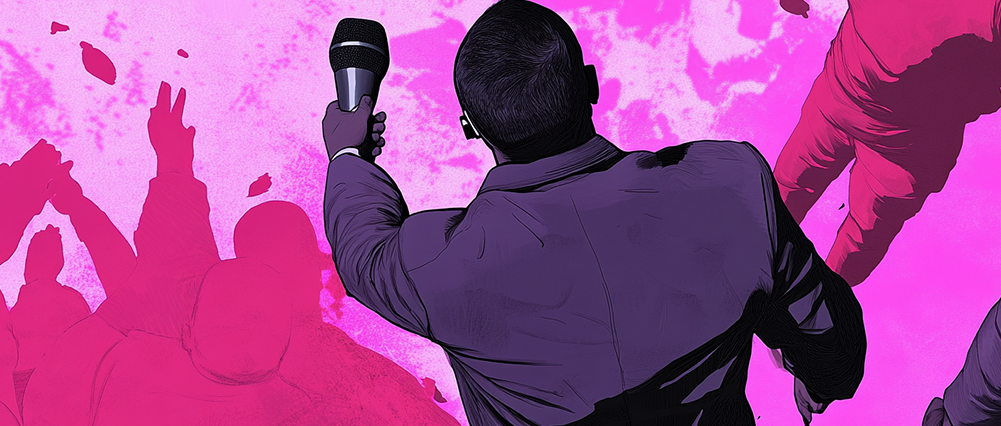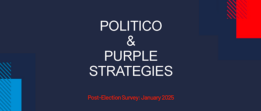By: Maddie Wilson & Katie Pudwill
Straight to the Point
What we See: Every pundit with a pulse has churned out a think piece on the 2024 election and what it means for the shifting media landscape and where people actually consume their news. In our new media reality—where there is a deep distrust and lack of interest in traditional, legacy media—strategies that keep earned media in a silo won’t meet your objectives and achieve staying power. News consumers face information overload, curated by algorithms that amplify bias, making it clear that earned media without paid amplification is ineffective. Control over messaging is an illusion; good reporting means telling both sides and even well-crafted stories are subject to sensationalism that can amplify and give voice to critics. In other words, format matters more than the outlet.
What it Means: The days of scattershot PR campaigns are over. Winning in this new landscape requires focus on objectives over channels and rejecting the old notion that success = “being everywhere” or being somewhere that feels important. Precise messaging that is amplified to the right audience repeatedly is the key to breaking through.
What to Do: Be consistent and focus on outcomes. Precision is the key to breaking through the noise.
What We See

PESO is Dead
The 2024 election wasn’t just a political turning point—it was a wake-up call for how dramatically the media landscape has shifted. With as many adults aged 30-49 reporting they got as much as their political news from social media as they did from news websites, it’s safe to say the old media playbook no longer applies. The traditional divide between paid advertising and earned media—the hallmark of the PESO (paid, earned, shared, owned) model—is dead. If you’re not pairing earned media with paid amplification to reach your audiences where they are, you’re missing the mark.
Meanwhile, news consumers are overwhelmed and suffering from information overload. Algorithms and AI curate their feeds, bombarding them with headlines, opinions, and fragmented pieces of information that typically confirm their own biases. By and large, people don’t seek out news anymore—the news finds them. And news isn’t disciplined, fact-checked reporting. It’s polarized, self-selected, and interest-driven.
Here’s what most agencies won’t tell you: earned media can hurt more than it helps. A positive story very rarely moves the needle, but a negative one? Things can spiral out of control before you even have time to measure the impact. True “message control” in earned media engagements—even with a perfect, curated message that tests really, really well—is an illusion.
The question isn’t where your story appears anymore—it’s how. Format beats outlet. Asking where your content will appear is the wrong question. The right question is: what format will resonate with the audience you want to reach? And what format is your CEO, leader, or principal prepared for? Most natural in? Willing to even try? Short formats demand discipline—every word matters. Long formats require relinquishing control, something that often doesn’t come naturally. In Mark Zuckerberg’s’ recent three-hour interview on the Joe Rogan Experience podcast, they discussed how media consumers are more and more hungry for long-form authenticity over short, controlled sound bites. In a sea of noise, depth and authenticity cut through. Real connection to your priority audience thrives in the space beyond the headlines.
What it Means

A Strategic Shift
Achieving a “win” in this new environment means flipping the script: define your objectives first, channels later. Forget the outdated push to “be everywhere.” That’s a stone age PR agency motto, not an effective strategy. Those who successfully break through use precision to reach the right people in the right places using what we know about them, with the necessary frequency to make it stick by repeating a clear, core message across any format you choose. And finding the right audience might require outside-the-box thinking, bold partnerships and new, surprising channels, messages, or platforms to reach audiences where they are today—which could be anywhere.
Coverage doesn’t equal influence. Landing a story in the paper of record might feel like a victory, but if it doesn’t deliver consistent messaging to the right audiences, it’s irrelevant. Influence comes from consistency. Say one thing, say it clearly, and repeat it everywhere that matters. And in this new media environment, the places that matter may not be where your company is accustomed to going.
It’s past time to retire blanket approaches to earned and paid media. Success comes from aligning media efforts with enterprise value—what will drive the business forward? Start and end there. That means rejecting the PR agency status quo: endless “message pillars,” scattershot campaigns, sentiment monitoring and coverage for coverage’s sake. In today’s world, a more focused, precise approach to earned—combined with a strategy to amplify it through paid across multiple channels—delivers more impactful results.
What to Do About it

Action Steps
- Think people, not channels. Stop asking, “What outlet has the largest readership?” Instead, ask, “Who are we trying to reach, and where are they?” Formats matter more than outlets. Target your audience like a political campaign targets swing voters—go where your people are. Do the original audience research to understand what they care about. And do the work to connect what you want to say to what they want to hear.
- Reframe your approach. Coverage for coverage’s sake is pointless, and risky. Focus on outcomes. Chasing big-name media hits may satisfy internal stakeholders, but it won’t drive long-term influence, unless you’re delivering a clear, consistent message—and repeating it until you’re blue in the face.
- Simplify your priorities. Less is more. You can and will have a myriad of business priorities, but each one cannot be the title of your organizations’ story. A chapter, a citation, sure, but know and lead with the title.
- Be bold and focus on the outcome. Most agencies will sell you more: more hits, more channels, more noise. They’re wrong. Hire experts to help you deliver targeted wins with a sharper focus—and amplify them with paid media to ensure your audience sees it and then sees it again.
Influence isn’t about being everywhere—it’s about being effective. Simplify your message, connect it to your audience expectations and repeat it relentlessly. Precision is power. And consistency is how you break through the noise.
The Purple team has helped some of the world’s most well-known brands develop communications strategies to drive influence. If you need support navigating this new media environment, contact us—we are here to help.
For more content like this, subscribe to the Purple Point newsletter here.

 Policy Priorities vs. Business Realities: What Executives Ne...
Policy Priorities vs. Business Realities: What Executives Ne...  POLITICO & Purple Strategies Post-Election Survey: Janu...
POLITICO & Purple Strategies Post-Election Survey: Janu...  Like Them or Hate Them, Community Notes are Here to Stay
Like Them or Hate Them, Community Notes are Here to Stay